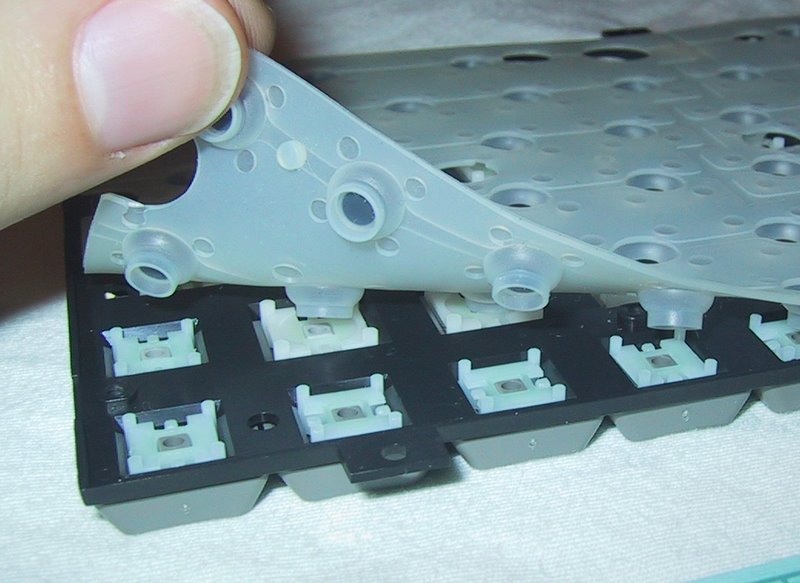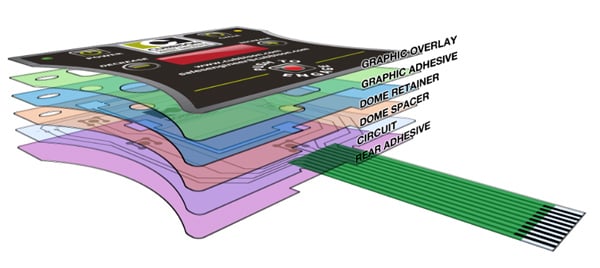Membrane Switches: A Affordable Solution for Advanced Control Systems
Membrane Layer Switch Innovation: The Trick to Reliable and Economical User Interfaces
Membrane layer button modern technology has actually arised as a pivotal component in the style of individual interfaces, offering both dependability and cost-effectiveness across a diverse range of applications. As we explore the complex benefits of membrane layer switches, their capacity for development raises concerns regarding future applications and evolving trends.
Recognizing Membrane Layer Change Modern Technology
Membrane switch technology is an extensively made use of interface service in various electronic devices, offering a seamless mix of performance and style. This technology includes several layers of materials, usually containing a visuals overlay, spacer layer, and a circuit layer. The graphic overlay presents the user interface components, while the spacer layer separates the circuit layer from the overlay until a user activates a button.
When stress is put on the overlay, the circuit layer completes the electric circuit, sending a signal to the device. This system permits different configurations, consisting of responsive responses and backlighting choices, enhancing customer communication. Membrane layer buttons are commonly manufactured making use of resilient materials such as polyester or polycarbonate, ensuring long life and resistance to ecological factors like dampness and dust.
The versatility of membrane switches enables their application in varied industries, including medical tools, consumer electronic devices, and commercial controls. Their small layout enables for assimilation into space-constrained settings, offering a reliable interface without jeopardizing aesthetic charm. Recognizing the complexities of membrane layer switch innovation is crucial for producers and developers seeking to develop reputable and effective human-machine user interfaces.
Trick Benefits of Membrane Buttons
While numerous interface options exist, membrane layer switches offer unique benefits that make them a preferred choice in many applications. Among the primary benefits is their toughness; membrane layer switches are developed to stand up to rough environmental conditions, including wetness, dirt, and temperature level fluctuations, guaranteeing resilient efficiency. This strength significantly decreases the requirement for constant substitutes, therefore lowering overall maintenance costs.

Moreover, membrane buttons are lightweight and compact, making them suitable for applications where room is limited. Their inconspicuous layout contributes to a smooth look without jeopardizing capability.
Cost-effectiveness is likewise a significant benefit, as the production procedure for membrane switches tends to be less costly compared to traditional mechanical switches. This price, integrated with their dependability and convenience of installation, settings membrane layer changes as a functional service for a wide variety of markets seeking reliable and efficient individual interfaces.
Applications Throughout Different Industries
Exactly how do membrane layer buttons adapt to the diverse demands of various sectors? Membrane layer switch modern technology is significantly identified for its convenience, making it suitable other for a broad variety of applications throughout numerous markets.
In customer electronic devices, membrane switches give a small service for remote controls and home appliances, improving individual experience with intuitive style. In addition, the industrial industry leverages membrane layer buttons for equipment control panels, taking advantage of their resistance to severe environments, such as dampness and dust.
Military and aerospace applications likewise make use of membrane layer switches for their reliability and capacity to withstand severe conditions, making sure functional effectiveness in essential situations. The food and drink sector embraces these switches for automated useful content systems, where hygiene and simplicity of operation are extremely important (membrane switch). Inevitably, membrane layer switches are tailored to fulfill the unique demands of each sector, showing their vital function in modern innovation interfaces
Design and Modification Alternatives

In the world of membrane switch technology, style and personalization choices play an essential duty in enhancing performance and user communication. These switches can be tailored to satisfy particular operational demands and visual choices, making them versatile elements in different applications.
Among the main personalization options is the design of the switch itself, which can be made to suit special user interfaces and ergonomic considerations. By changing the shape, dimension, and plan of buttons, producers can produce intuitive designs that promote simplicity of use. In addition, the consolidation of various colors and graphic overlays permits for branding and improved presence, guaranteeing that users can promptly recognize features.
Additionally, membrane layer switches can be engineered with numerous tactile responses mechanisms, such as elevated switches or audible clicks, to enhance the individual experience. Various products can also be picked for resilience and ecological resistance, dealing with variables such as wetness, temperature level fluctuations, and chemical direct exposure.
Ultimately, the comprehensive layout and customization alternatives available in membrane button technology encourage businesses to produce customized services that not only fulfill practical requirements yet likewise straighten with their branding and functional needs.

Future Fads in Membrane Layer Buttons
As membrane switch modern technology proceeds to develop, future fads are progressively concentrated on boosting customer experience and integrating sophisticated performances. One considerable fad is the integration of touch-sensitive and capacitive modern technologies into typical membrane buttons. This development permits even more intuitive interface, supplying responsive comments while preserving a smooth layout.
An additional arising trend is using eco friendly products, driven by the growing demand for lasting manufacturing methods. Producers are looking for to lower their carbon impact by utilizing recyclable substrates and low-impact inks, aligning with worldwide sustainability objectives.
In addition, the increase of the Net of Things (IoT) is triggering the Continued consolidation of wise functions into membrane switches. Improved connection alternatives will certainly make it possible for gadgets to interact with each other, permitting smooth assimilation into broader systems.
Additionally, developments in printing technologies, such as electronic printing, are enabling higher layout versatility and customization. This enables makers to produce elaborate designs and vibrant colors cost-effectively.

Verdict
To conclude, membrane layer switch technology represents an important development in user interface layout, offering significant benefits in toughness, modification, and cost-effectiveness. Its extensive applicability across varied markets highlights its importance in modern-day technology. As developments proceed to arise, particularly in touch-sensitive user interfaces and lasting materials, the potential for membrane layer switches to boost user experience and performance remains encouraging. Continued expedition of this innovation will likely yield additionally improvements and widen its range in future applications.